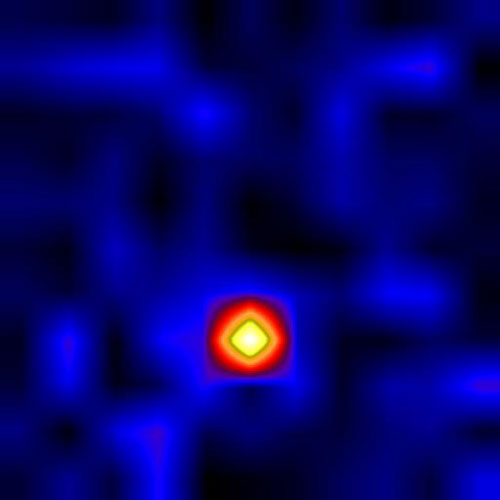
We could see the bottom of the whirlpool all black with sand and mud, and the men were at their wit’s ends for fear.
Homer, “The Odyssey”, Book XII
In our book, “Reality in the Shadows,” Jim Gates, Frank Blitzer and I revisit the first time human set eyes on a black hole. In Chapter 13, “A Shadow Where No Light Shines,” we wrote,
[The blue supergiant star] HDE 226868 is seen to “dance” with its partner. Measurements of this dance have concluded that it takes about 5.6 days to complete one mutual revolution … What fearsome gravitational partner could make a supergiant blue star dance so quickly while locked in the strong embrace of its gravity?
“Reality in the Shadows,” Chapter 13, pg. 242
If you look with your eyes, you cannot see an answer to this question, as no visible light comes from the partner. How strange! If one uses the measured information about HDE 226868 to estimate the mass of its partner, one concludes the mass to be about fifteen times that of the sun. We know many stars with masses in that range. They shine brightly in the sky and are easily seen with the naked eye. However, no instrument to aid the eye will reveal HDE 226868’s unseen partner.
It was the detection of Cygnus X-1 using x-ray light that provided the first evidence of its existence. … Cygnus X-1 was the first object to qualify as an excellent candidate for being a black hole.
Who was the first to “see” Cygnus X-1 with x-ray eyes? It resulted from the birth of a new kind of astronomy – x-ray astronomy – in 1962. The founders of this field were Riccardo Giacconi, Herbert Gursky, Frank Paolini, and Bruno Rossi. At the time, the first three observers were at American Science and Engineering, Inc. in Cambridge, MA while the fourth was at MIT. The launch of Aerobee rockets in 1964, carrying x-ray observing instruments high above the Earth’s atmosphere, ultimately led to the first detection of what became known as Cygnus X-1. However, it was the launch of the Uhuru satellite in 1970 (proposed by Giacconi and Gursky) that led to the first very detailed studies of this x-ray source, though it would take many more years and much more observing data to finally understand what Cygnus X-1 really represented.
Recently, Giacconi passed away. Let us celebrate his life and his contributions to the birth of a new field of astronomy. As people explore new ideas and new technologies, they find ways to apply them to fundamental questions about the universe. With the curiosity of a child, scientists ask the most basic things they can when presented with a new tool (often of their own invention). “Is anything emitting x-rays?” is a really basic question. The answer, it turns out, has startling implications for our wider and deeper knowledge of the cosmos.
Resources
- Giacconi et al. “Evidence for X-rays from Sources Outside the Solar System.” Phys. Rev. Lett. 9 (439). 1962.
- Riccardo Giacconi. “Nobel Lecture.” https://www.nobelprize.org/prizes/physics/2002/giacconi/lecture/


